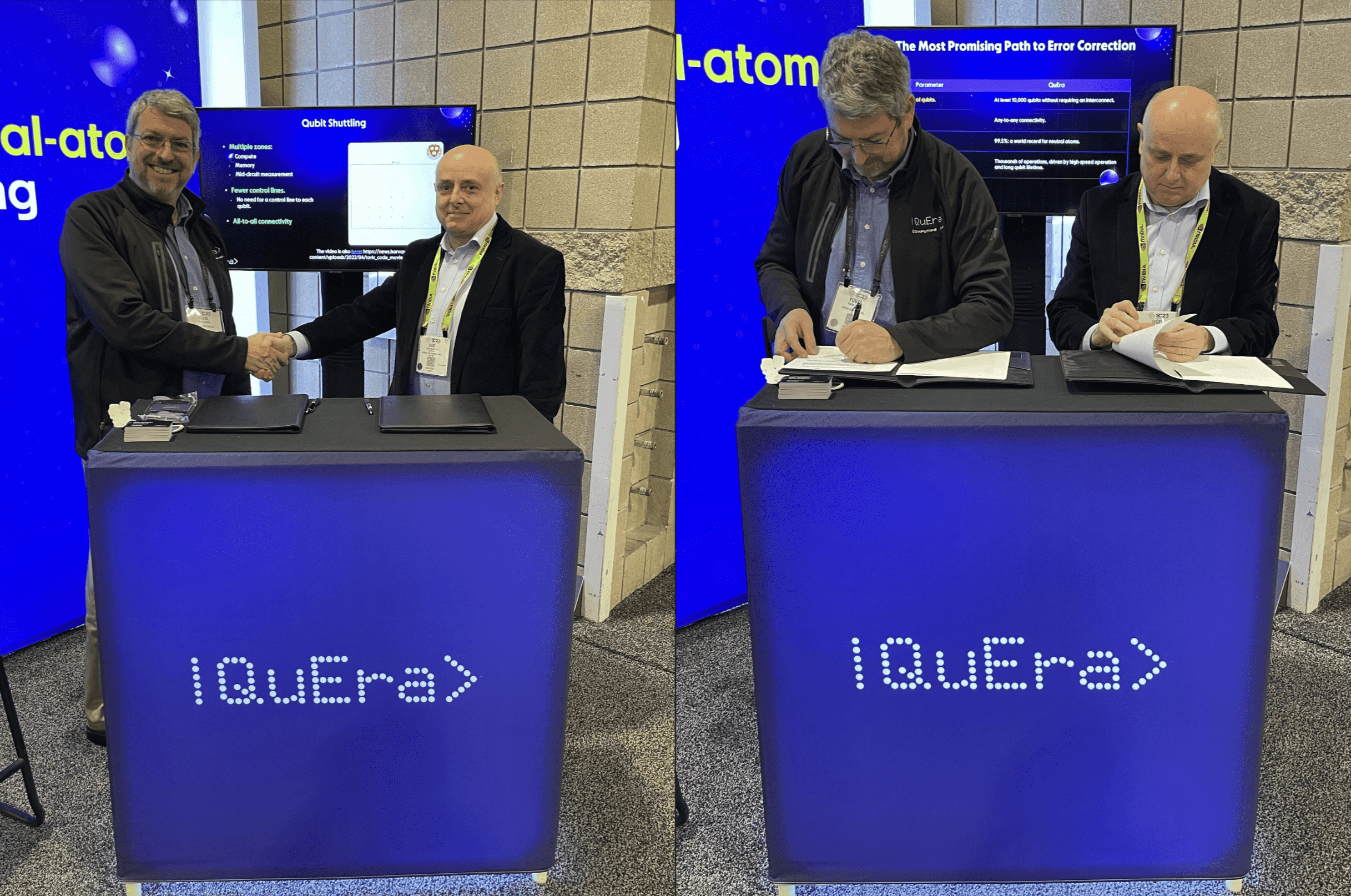We are pleased to announce that our new paper "Large-scale quantum reservoir learning with an analog quantum computer" is posted on arXiv at https://arxiv.org/abs/2407.02553.
In the paper, we develop a general-purpose, gradient-free, and scalable quantum reservoir learning algorithm that harnesses the quantum dynamics of QuEra's Aquila to process data. Quantum reservoir learning on Aquila achieves competitive performance across various categories of machine learning tasks, including binary and multi-class classification, as well as timeseries prediction.
The QuEra team performed a successful quantum machine learning demonstration on up to 108 qubits, demonstrating the largest quantum machine learning experiment to date (the previous successful QML record was 40 qubits).
We further observe comparative quantum kernel advantage in learning tasks by constructing synthetic datasets based on the geometric differences between generated quantum and classical data kernels. This demonstrates the potential of utilizing classically intractable quantum correlations for effective machine learning.
What is Quantum Reservoir Computing?
Quantum reservoir computing (QRC) is an innovative approach in the realm of quantum machine learning, leveraging the unique properties of quantum systems to enhance computational capabilities. At its core, QRC adapts the principles of classical reservoir computing, which replaces the hidden layers of a neural network with a dynamic physical system, known as a reservoir. In the quantum version, this reservoir is a quantum system where classical data is encoded into the parameters governing the quantum dynamics. The quantum system evolves, and its state is probed to extract data, which is then processed classically to make predictions or classifications. This method sidesteps the complex parameter optimization required in traditional variational quantum algorithms, making it potentially more efficient and scalable.
QuEra is pioneering the application of QRC using their Aquila machine. Neutral atoms are ideal for creating large-scale, fault-tolerant quantum computers due to their lack of manufacturing defects and ability to operate at room temperature. QuEra's approach involves encoding data into the positions or pulse strengths of neutral atoms, evolving the system, and then measuring local observables to gather data for classical post-processing. This method has shown promising results, such as reaching problem thresholds in the MNIST dataset classification, demonstrating the potential of QRC to achieve quantum advantage in machine learning tasks. By leveraging the scalability and unique properties of neutral atom systems, QuEra aims to push the boundaries of quantum machine learning, making significant strides toward practical applications.
Additional information and QRC code samples
If you are interested to try out quantum reservoir learning, tutorial notebooks covering proof-of-concept simulations and experiments are available at https://github.com/QuEraComputing/QRC-tutorials.
A recent webinar covering the major results of the work is also available here:
Don't hesitate to contact QuEra team with potential project ideas and problems of interest amenable to machine learning.
Interested in quantum machine learning?
Watch results from Deloitte
Watch the recording now




